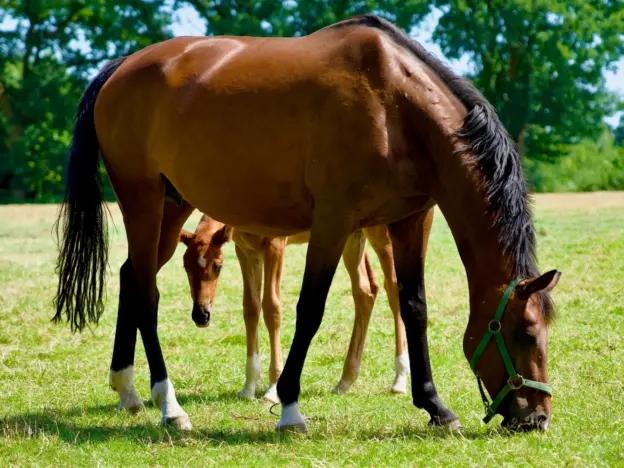Intro
Most of the warmbloods in Germany are named for the region in which they are bred. In keeping with that tradition the Westfalen or Westphalian horse comes from Westphalia in Germany
Origins
The breed was created at the State Stud of Warendorf, which had been created in 1826 to improve local breeds. Stallions that suited local needs of each region were used as the foundation and state stud fees were kept low to allow local farmers to produce quality animals and fortify local stock.
The Westfalen breed started with animals that were similar to Trakehners during that time, slimmer riding horses with obvious Thoroughbred blood. As the local population grew a need arose for more robust, versatile animals to keep up with a rapidly growing agriculture industry.
Phased Out
By the start of the 20th century the Rhenish Cold Blood, which was far more suited to the task became the farmers horse of choice. Slowly the Westfalen breeding was phased out of the Warendorf stud and replaced with the Rhenish draft.
As with most draft breeds, the 20th century rendered them essentially obsolete and warmbloods came back into favor. Stock was replenished with Hanoverain blood which played a large part in refining the Westfalen into a sporting type. Strict breeding practices are used and animals must pass rigorous testing to represent the breed by standing stud.
Features
Average height 15.2 – 17.2 hands
Physique
Similar to the Hanoverian in conformation
head is attractive and a straight or slightly dished profile
Broad, medium-length back with powerful loins
High-set tail, strong hindquarters
Short legs with large pronounced joints, strongly muscled forearms
Hard, well-shaped hooves
Traditional Colors
All colors
Temperament
Even-tempered and willing
Use
Riding horse
Eventing horse
Show horse
Sport horse
Helpful Links
* all links open in a new window
Westfalen Horse Association
Westfälisches Pferdestammbuch
